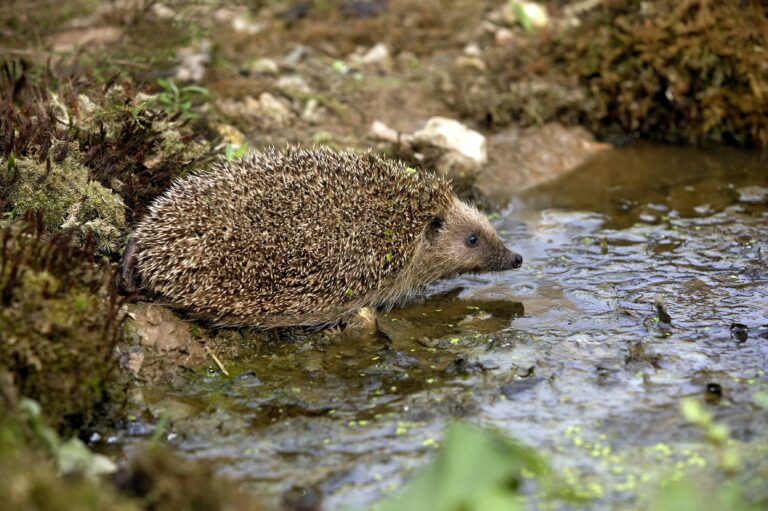Erinaceus europaeus

The European hedgehog, also known as the Western European hedgehog or simply hedgehog, can reach a head-body length of up to 30 cm and a weight of up to 1.3 kg (Schaefer 2018). The spines on its back are light-colored at the tips and dark brown in the middle, while the rest of the body is also brownish in color. It is commonly found in proximity to human settlements and inhabits forest edges, gardens, hedges, and parks. When threatened, the European hedgehog curls up and extends its spines outward as a defense mechanism against predators such as foxes or badgers. During the cold months, Erinaceus europaeus hibernates. The breeding season occurs between May and October, with approximately 5 offspring born per litter (Southern 1965).
Diet: The European hedgehog primarily feeds on invertebrates such as insects and their larvae, snails, and worms. Occasionally, it may also consume plant-based food items such as fruits and nuts (Southern 1965).
Conservation status: According to the IUCN Red List of Threatened Species, Erinaceus europaeus is classified as “Least Concern.” However, in Germany, it is on the preliminary Red List of endangered species.
-
Schaefer, M (2018)Brohmer – Fauna von Deutschland. Ein Bestimmungsbuch unserer heimischen Tierwelt: Quelle & Meyer Verlag GmbH & Co.
-
Southern, H (1965)Handbook of British mammals. Mammal society of the British isles. Blackwell Scientific Publications Oxford.